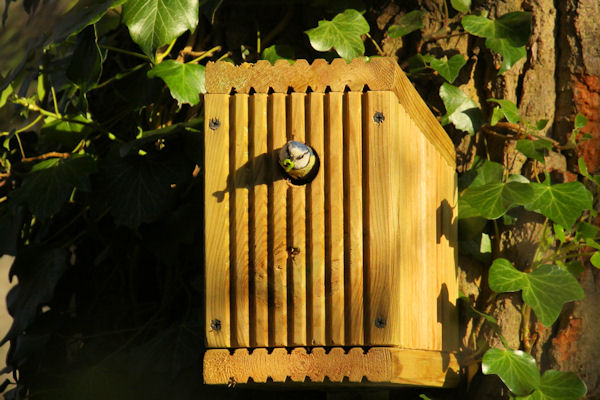The Trees
At the end of the most recent ice age, Britain's tree species numbered just 30. These species are still with us and are grouped as Britain's native trees. Bicknor wood is home to 19 of these native species, but the dominant tree, the sweet chestnut was originally a mediterranean species, probably imported by the Romans.
This list is probably not yet complete. If you know of any other species, please let me know and I will include it here. Also, if you have any particularly nice photos of any of the trees I would be delighted to use them as examples.
Native trees;
- Ash - coppiced along the northern boundary of the wood. No large specimens.
- Aspen - a small grove on the northeast corner of the dead tree clearing.
- Beech - a couple of very insignificant individuals along the southern boundary.
- Silver birch - common and widespread.
- Blackthorn - mostly along the northern and eastern edges of the wood.
- Wild cherry - widespread, but most apparent in southeastern boundary.
- Dogwood - just one (so far) on the mound in the southwest corner.
- Elder - common and widespread
- Hawthorn - common and widespread.
- Hazel - fairly common, mostly around the edges of the wood
- Holly - most dense in the mid-section of the southern edge.
- Hornbeam - uncommon with only a few individuals. Best example in the hedgerow separating Imperial Park and The Coppice.
- Field maple - uncommon. best example on Buffkyn way in the extreme northwest corner, close to the show homes of Bicknor Wood housing development.
- English oak - abundant and widespread.
- Sessile oak - common, but more abundant towards the eastern end the wood.
- Rowan - just a few examples. Best view in the section opposite entrance from Bicknor Wood housing development.
- Goat willow - common and widespread.
- Yew - Only two small trees; one immediately on the left at the entrance from Bicknor Wood housing development and the other on the southern boundary.
- Guelder Rose - a small stand close to the entrance from Bicknor Wood Development.
Note the two species of oak tree. The pedunculate or English oak conforms to the classic perception of an oak tree with long-stemmed acorn cups used as smoking pipes by the forest folk. The sessile oak on the other hand has no stalk to its acorn cup.
The oaks may also be separated during the winter when the skeleton of the English oak shows horizontal, low-hanging branches while the branches of the sessile oak grow upwards and form a fan-shaped tree.
Introduced trees;
- Sweet chestnut - abundant especially in the centre of the wood within the loop path where they have been coppiced.
- Norway maple - just one self-seedling on the edge of the gate path. Please tread carefully.
Coppicing is a technique of growing wood as a crop. By cutting a stem, many others will grow in its place, thus giving a much higher yield. Note the many-stemmed sweet chestnut in the heart of the wood. Silver birch and ash also lend themselves to coppicing. There are many examples of birch and all the ash has been intentionally cut to produce more stems.
Shrubs;
- Gorse - possibly from the planting program on the southern boundary?
- Buddleia - at the base of the burned tree.
- Broom - in the burned tree clearing and possibly part of the planting program on the southern boundary.
- Honeysuckle - Common and widespread.
I have not included trees and shrubs from the planting scheme that was carried out by the developers. There are a number of shrubs and trees that echo the species in the wood, but are planted in much denser stands.



Comments
Post a Comment